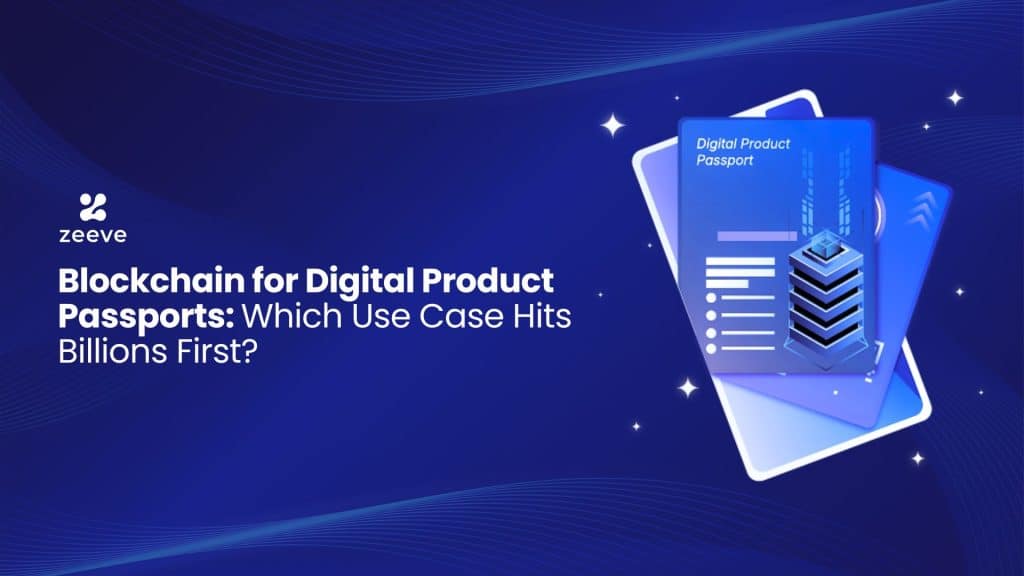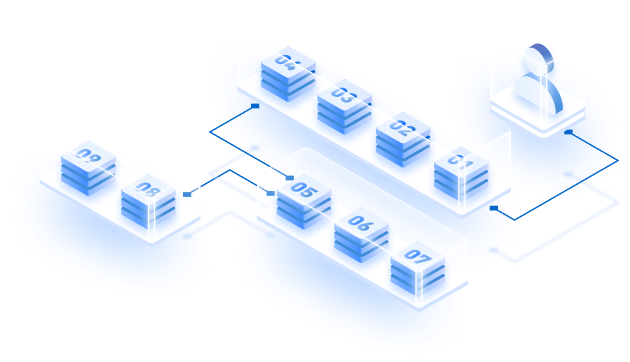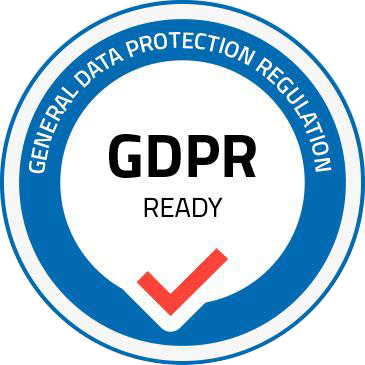What would you do if you want to act in an accountable manner towards the environment by buying sustainable products but get to know that your store owner/ manufacturer is not acting in a compliant manner. Or, you want to buy a genuine product but you end up knowing that it is a counterfeit despite paying a premium price.
In the EU region, more than 150 claims from companies highlighting that their products are authentic, have credible environmental impact, protects labor rights and are recyclable have ended up fraudulent due to the absence of an infrastructure to validate its authenticity.
Digital product passports on blockchains are now here as an infrastructure solution to help fix this. In this article, we will see what digital product passports are, what they do, why they are required and which sectors will undergo massive transformation by their introduction.

What is a Digital Product Passport?
To understand a Digital Product Passport, you need to first understand a passport from a holistic view point. Like a passport contains all the information of the person like his address, date of birth, criminal records and other details streamlining their immigration to a foreign country, a Digital Product Passport contains the details of the product like raw material sourcing, manufacturing process, environmental impact, authenticity, labor rights, quality, and recyclability required to comply with the regulatory standards and ensure verifiability in a domestic and international market.
What Are The Benefits They Bring?
They bring the following benefits in a product’s journey and to push the circular economy objective;
Stage 1
- Validates Manufacturing
- Material and Substance used
- Manufacturing location and Processes
- Environmental Footprints
- Durability and repairability details
Stage 2
Makes Supplychain Accountable:
Unique Digital Identification embedded in the product in the form of QR code, NFC tag, or RFID chip. Upon scanning the code, the entire product journey is pulled out.
Stage 3
Streamlines Access Controls:
Designate access control of RFID/ QR/ NFC based on roles.
- Consumers→ They can scan the RFID/ QR/NFC to see repair instructions, sustainability score, warranty, origins, authenticity.
- Repairers / recyclers→ They access to see the parts compatibility, disassembly guides, material composition
- Regulators→ They get access to compliance checks, and supply chain proofs.
- Manufacturers → supply chain analytics, performance tracking and more.
Which Technology They Use for DPP?
After you have read what are the benefits they bring, it might have occurred to you that all of these steps would demand provenance. In this regard, what is the supporting technology for DPPs or Digital Product Passport?
Digital Product Passports should be built on top of blockchains because through blockchains, they get the following traits;
- Transparency and Trust: In the very start of this blog, it was mentioned that more than 150+ claims have been bogus or fraudulent about products claiming to be environmentally sustainable. But it is very hard to prove the same despite using a Digital Product Passport, if the technology used is not transparent, decentralized and verifiable onchain. Through the use of blockchains, it is possible to get transparency and trust while using DPP.
- Security And Immutability: It is mandatory that the data stored inside the DPP shouldn’t be vulnerable to tampering and hacks. For that matter, the use of blockchains readily fulfills this requirement because blockchains are immutable.
- Traceability: It is very hard to trace a product’s journey when they are using centralized systems because there’s always the scope for MIM(Man-in-The-Middle) attack. For example, the centralized servers can tweak quality control, recalls,and sustainability claims. But the use of blockchains ensures that any activity done whatsoever in trying to change any data at a given point can be easily tracked, identified and resolved.
Why Are Digital Product Passports In Trend Lately?
1. Regulatory Pressure:
In 2025, the EU has proposed to pass the following regulations (i) Ecodesign for Sustainable Products (ESPR) legislation, (ii) CEN/CLC/JTC24 (iii) delegated act for textiles (iv) delegated act for iron and steel products (v) Battery Passport regulation (vi) Corporate sustainability reporting (vii) Proposal for a regulation of the European Parliament and of the Council on detergents and surfactants, amending regulation. Due to all these regulations, industries operating in the EU region for exports and those businesses which are importing goods from other regions must provide the following things;
- Steps undertaken to produce less waste
- Guidelines followed to empower customer for better decision making
- Product sustainability standards followed for greener products while importing and exporting the same.
To validate all of these, they will need an infrastructure that meets with these goals which Digital Product passports on blockchains provides from the ground up making them a hot favorite in the EU region and even beyond.
The EU just passed a law that will force ESG standards on large AMERICAN companies doing business in the EU. But it's not just them: If your business is in these companies' "chain of activities" — design, sourcing, transport, storage, distribution, etc — YOU also have to comply. pic.twitter.com/hKaC7cCk1y
— Glenn Beck (@glennbeck) June 13, 2024
2. Growing Consumer Demand for Transparency, Sustainability and Accountability
In the EU, the craze for protecting the environment has gained such a mileage that consumers are willing to pay even a 9.7% sustainability premium on their product purchases.
But despite this fact, they are lured into false claims or green washing at the hands of the manufacturers and store owners. For example, when an investigation was done, it was found that 53% of the green claims were sub-standards or false, raising concerns for transparency while dealing with green credits.
EU 'Sustainable Financial Disclosure Regulation' is clearly flawed – This money with Green credentials flows to investments in Big Oil Companies, Airline companies + Coal Giants. Greenwashing of Financial Markets has proven to be very lucrative with over 600 Billion invested… pic.twitter.com/ez8rLGpm5h
— Mick Wallace (@wallacemick) January 27, 2023
3. The Need For a Circular Economy
The EU region has been strategically planning to implement resource demand strategies in buildings, transport, food, and energy supply systems. Due to this effort, not only it will help the EU region meet the NDC target even before 2035 but even put them on the high ground when it comes to caring for the environment.
At the same time, this new approach will also be creating over 2.5 million new jobs within the EU in sectors such as recycling, repair and reuse. But the challenge here is to avail clear, standardised and simple information on product durability, repairability, and recyclability in a simple and scalable manner, Digital Product passports are helping in this regard in a massive way.
[ICYMI] IOTA & @HelloOrobo launch SE Asia’s 1st live Digital Product Passport for recycled batteries. Tamperproof tracking boosts EU compliance & circular economy goals, linking OEMs, processors & IOTA’s Business Innovation Program.
— IOTA (@iota) August 6, 2025
🔗 Read more: https://t.co/WyHxErQKfW
4. Rise of Fake/ Counterfeit Products
The OECD report has highlighted that trade in counterfeit goods is going to be a major problem for the global economy. It is expected that due to this practice the global economy will lose an average of $1.8 trillion by 2030 and more than 5 millions jobs will be at stake until something concrete is done to mitigate it. DPPs on blockchains are spearheading to check the same because they provide all the details that consumers are seeking to fight against the rise of counterfeited goods.
🚨WARNING: FAKE PRODUCT ALERT 🚨
— Muha Meds (@muhamedsglobal) January 7, 2025
We’ve been made aware of this video showcasing a counterfeit product that does not exist. Let us be clear: THIS IS NOT OUR PRODUCT. These knock offs not only fail to meet our quality standards but can also be dangerous to use.
👉🏼 Here’s how to… pic.twitter.com/Fdjk9j1mM6
Which Use Cases Will They Transform?
Luxury Goods / Conspicuous Consumption
To verify the authenticity of luxury goods is tough until and unless you have means to validate their manufacturing. For that matter, Digital Product Passports on blockchains are ending up as an amenable solution because you can instantly validate whether the product that you are using is legit or fraud by scanning the RFID/QR codes and tracking the provenance of the same. Lacoste has been using the DPPs on blockchains to verify the authenticity of its rare limited-edition collection. The Factory Drop shipping significantly increased after integrating the same.
Exciting News! 🐊
— Lacoste (@Lacoste) January 30, 2024
Dive into the world of Digital Fashion with Lacoste! Discover our first-ever collection on @Roblox and @zepeto_official in partnership with @dressXcom 👗 pic.twitter.com/yC1a0XTP9o
Automotive / Automobile Sector
At the moment, it is very difficult to verify whether your vehicle has been actively contributing to controlling environmental degradation. In order to help the automotive industry scale keeping the greener angle in mind, it is necessary that from manufacturing to delivery, maintenance, second hand market model and even end of lifecycle of the vehicle can be easily verifiable on chain. DPPs help in lifecycle tracking of the vehicle by validating for the sustainability practices they employ, the service life, materials used and so on and so forth. The Volvo Car has already used the digital product passport for the use of battery in its EX90 SUV model. Through this, the Volvo cars can easily meet the EU mandate on battery regulations of 2027.
According to Vanessa Butani, Volvo’s head of global sustainability, the battery passport is more than just compliance. “It’s really important for us to be a pioneer and a leader,” Butani told Reuters. The EX90 SUV, equipped with this innovative passport, is set to begin production soon at Volvo’s plant in Charleston, South Carolina, and will be delivered to customers in Europe and North America from the second half of the year. Owners can access a simplified version of the passport using a QR code on the inside of the driver’s door, while a more comprehensive version will be provided to regulators.
Consumer Electronics / Digital Goods
From the point of justifying with the traits of the circular economy to validating repairs, software updates, these are the few areas that consumer electronics demand which DPPS on blockchain are delivering right at the moment. Due to this, it is now easy to verify the number of software updates the device has undertaken despite being delivered brand new or whether the existing parts can be recycled back and used in a fresh new manufacturing cycle.
But why is this necessary? As a manufacturer in consumer electronics, it is very important that you are not just complying with the demand of the consumers but even duly addressing the regulatory compliances in any jurisdiction. Through DPPs, it is possible to validate that the device/ product is recyclable and genuine. So far, Asus has been a prime example using the DPP for the ExpertBook B series laptop because they want to stand for the practice of circular economy to cater to consumer and regulatory demands.
The ASUS ExpertBook B3 supports Digital Product Passports, giving you clear insight into sustainability and repairability—no guesswork needed.
— ASUS (@ASUS) July 18, 2025
A smarter, greener choice for business.
👉 https://t.co/jBI14OH5kW#ASUS #ExpertBook #SustainableTech #DigitalProductPassport pic.twitter.com/iwjuTLInSJ
Art and Collectibles
Art and collectibles are ripe for innovation because presently it is very hard to validate an art whether it is genuine or a fake copy. At the same time, even having to receive royalty or benefits for the same is so much of a hassle. But with the help of a digital product passport on blockchain, not only is it possible to validate the authenticity of the art but even get benefits accrued while holding the same.
The Prestige Pass.
— Prestige (@theprestige_art) June 2, 2024
Access an exclusive ecosystem with strong partnerships with renowned artists, galleries, museums, and auction houses.
Experience unique 1/1 pieces, multiple art flip opportunities, world-class brand collaborations, and so much more.
But did you believe this… pic.twitter.com/RmPcp4xKPn
If you are wishful of creating your own digital product passport for any of your products built around the above mentioned use-cases, you need an expert to help you because there’s a lot of back and forth going on to develop the best outcomes.

Build Your own Digital Product Passport on Blockchain With Zeeve
Zeeve, as a proven digital transformation company can help you launch your own Digital Product Passport with blockchains as an underlying tech. With over two decades of experience launching private and public blockchains, Zeeve can bring in everything that you need to integrate your own Digital Product Passport on blockchains because developing DPPs would require deduction, planning, analysis and collaboration that Zeeve with more than 40+ integration partners can easily handle.
Moreover, Zeeve can also help you set up dashboards from where you can easily monitor , analyze and audit your digital Digital Product Passports on blockchain. To get to know more about DPPs, you can schedule a call with our blockchain experts who shall be guiding you through the process of undertaking digital transformation.




